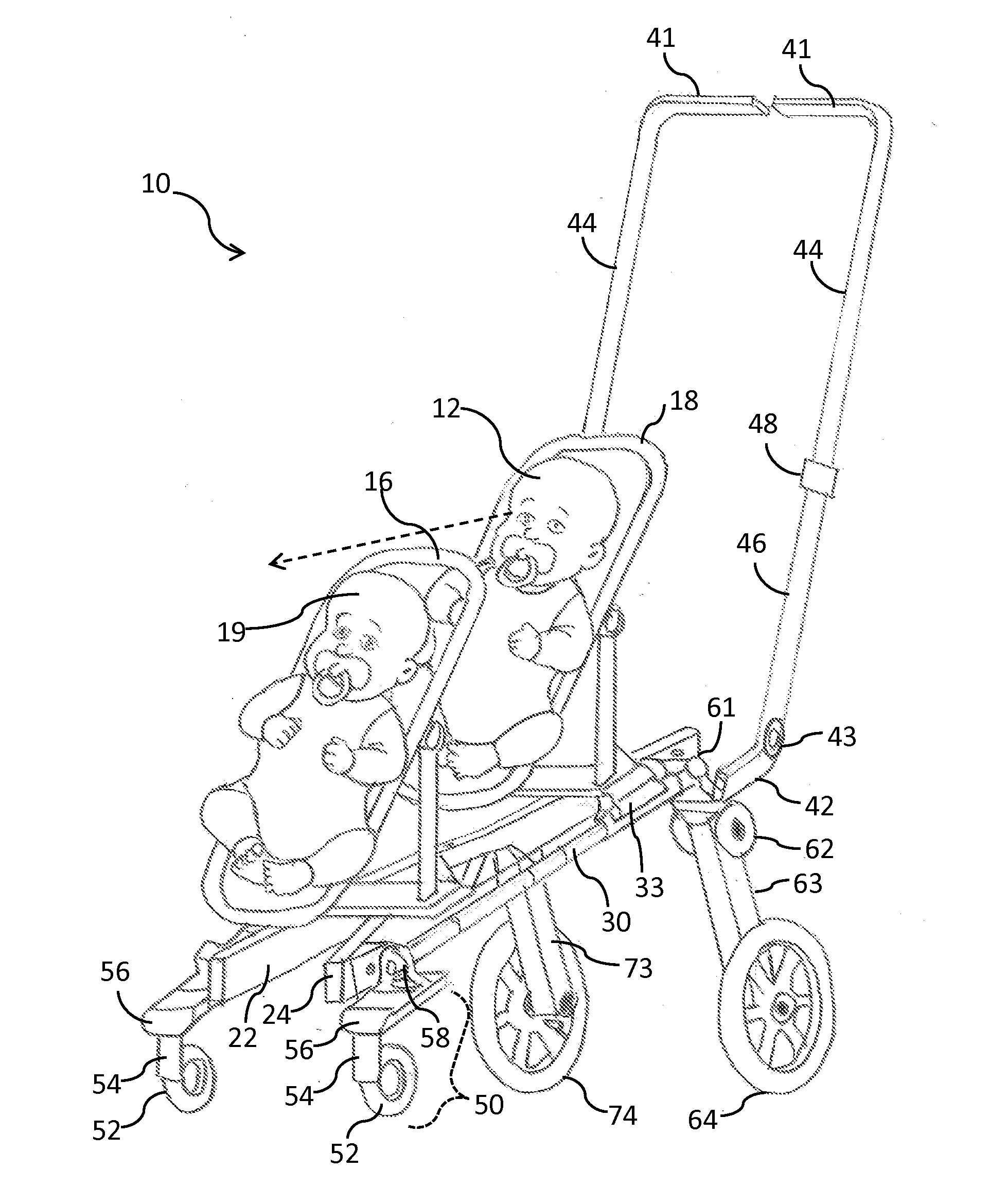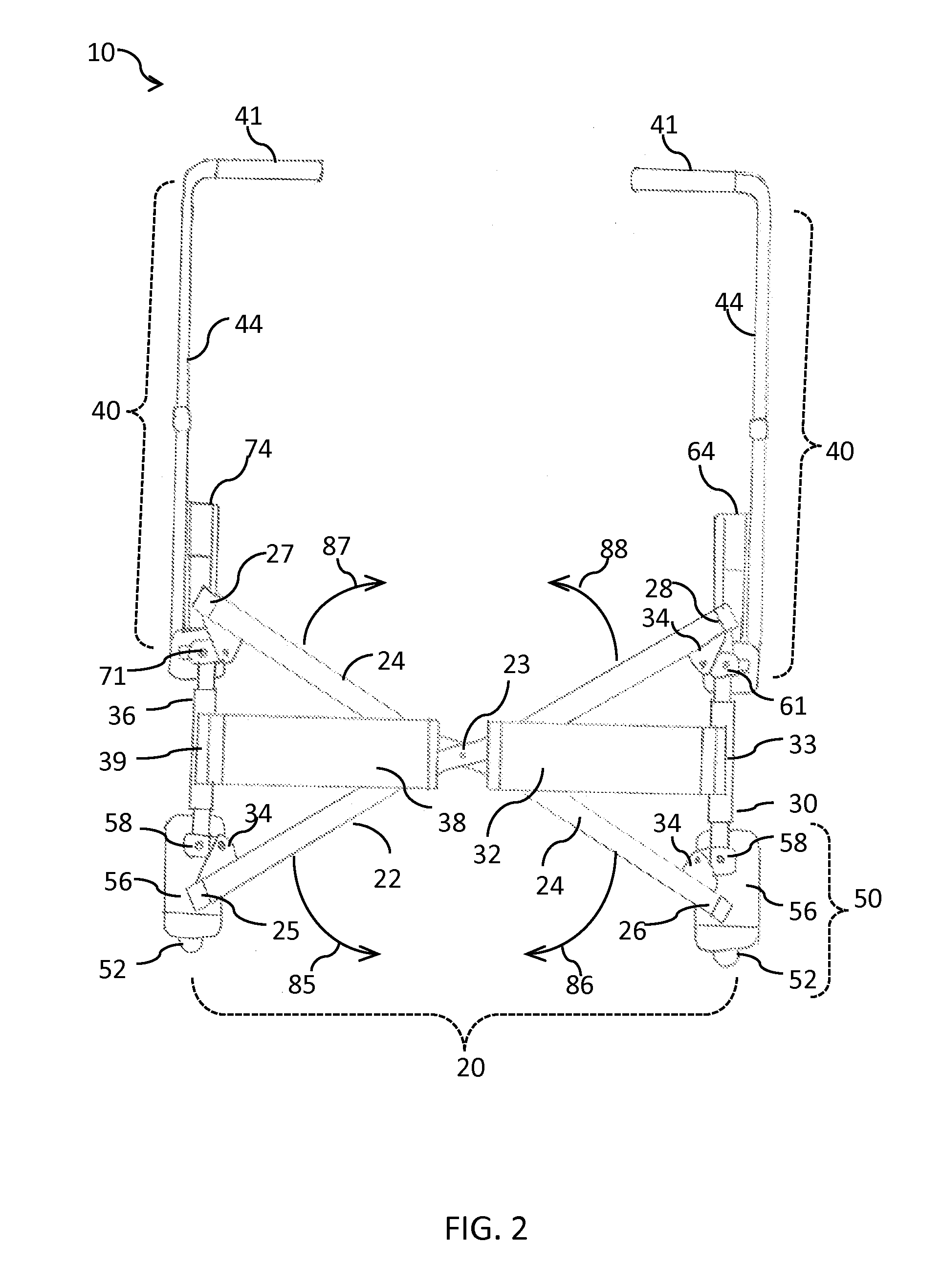Convertible double stroller
a convertible, stroller technology, applied in the field of children's strollers, can solve the problems of inability to easily change from side-by-side to front-to-back arrangement, inability to easily fit through a multiplicity of different sized doors or narrow confines, and difficulty in moving the double stroller from place to place, etc., to achieve convenient storage, easy manufacturing, and easy repositioning and folding
- Summary
- Abstract
- Description
- Claims
- Application Information
AI Technical Summary
Benefits of technology
Problems solved by technology
Method used
Image
Examples
Embodiment Construction
[0035]At the outset, it should be clearly understood that like reference numerals are intended to identify the same structural elements, portions, or surfaces consistently throughout the several drawing figures, as may be further described or explained by the entire written specification of which this detailed description is an integral part. The drawings are intended to be read together with the specification and are to be construed as a portion of the entire “written description” of this disclosure as required by 35 U.S.C. §112.
[0036]Caregivers of children need to transport two children in a stroller or baby carriage. There are carriage devices designed for infants and toddlers which are designed to carry two children. The present disclosure generally comprises a convertible frame assembly for a double stroller that includes a cross bar base frame assembly which can be expanded or collapsed in a scissor-motion to allow the seat mounts to be oriented in either a side-by-side placem...
PUM
 Login to View More
Login to View More Abstract
Description
Claims
Application Information
 Login to View More
Login to View More - R&D
- Intellectual Property
- Life Sciences
- Materials
- Tech Scout
- Unparalleled Data Quality
- Higher Quality Content
- 60% Fewer Hallucinations
Browse by: Latest US Patents, China's latest patents, Technical Efficacy Thesaurus, Application Domain, Technology Topic, Popular Technical Reports.
© 2025 PatSnap. All rights reserved.Legal|Privacy policy|Modern Slavery Act Transparency Statement|Sitemap|About US| Contact US: help@patsnap.com



